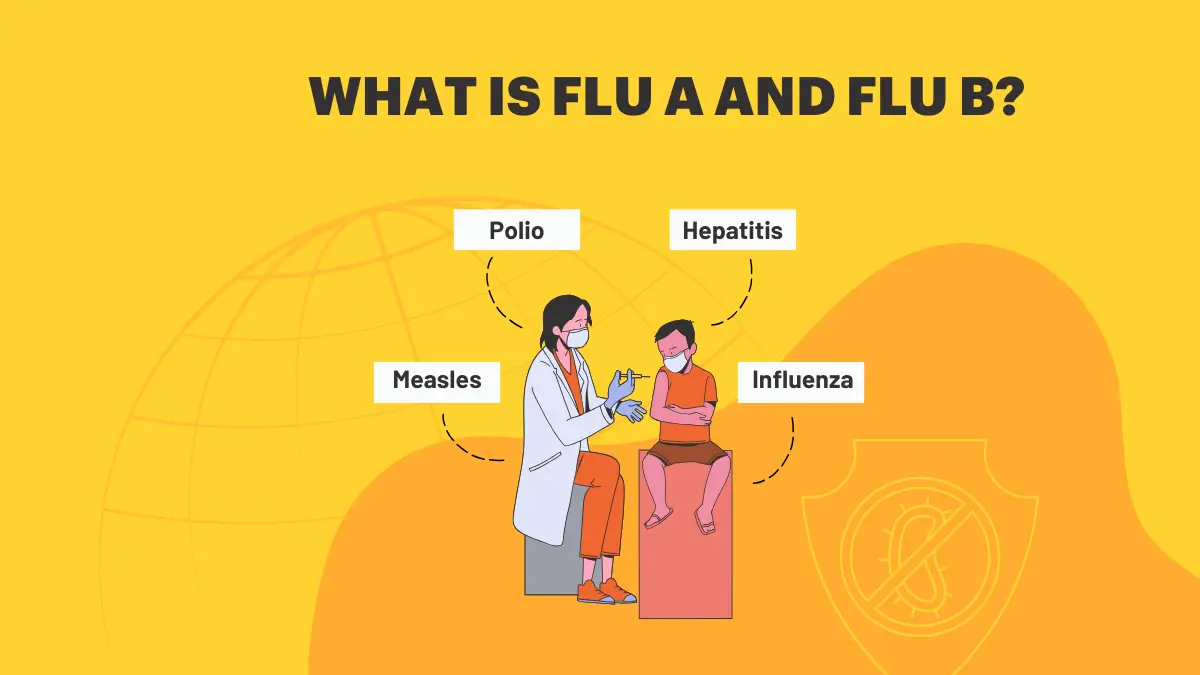Influenza, commonly referred to as the flu, is a highly contagious viral infection that affects the respiratory system. It can range from mild to severe, and in some cases, it can lead to serious complications such as pneumonia, bronchitis, or the worsening of chronic conditions like asthma or heart disease. Influenza is caused by influenza viruses, which are spread through respiratory droplets when an infected person coughs, sneezes, or talks. The flu season varies from year to year, and understanding its causes, symptoms, prevention, and treatment is essential for public health awareness.
What is Flu A and Flu B?
| Feature | Influenza A | Influenza B |
|---|---|---|
| Virus Type | Belongs to the Orthomyxoviridae family; has multiple subtypes classified based on hemagglutinin (H) and neuraminidase (N) proteins (e.g., H1N1, H3N2). | Belongs to Orthomyxoviridae but has no subtypes; instead, it has two main lineages: Victoria and Yamagata. |
| Severity | More severe due to rapid mutations and the potential for pandemics. Can cause intense flu seasons with high hospitalization and mortality rates. | Generally milder than Influenza A but can still cause severe illness, especially in high-risk individuals. |
| Mutation Rate | High mutation rate due to both antigenic shift (major genetic changes, leading to new subtypes) and antigenic drift (gradual mutations). | Lower mutation rate; undergoes only antigenic drift, meaning the virus changes slowly over time. |
| Pandemic Potential | Capable of causing global pandemics due to antigenic shift, as seen in the 1918 Spanish Flu and 2009 H1N1 outbreak. | Does not cause pandemics, as it only circulates among humans and lacks major genetic shifts. |
| Transmission | Spread through respiratory droplets, contaminated surfaces, and close human contact. Zoonotic transmission (animal-to-human) is possible. | A similar transmission method as Influenza A but is limited to human-to-human transmission. |
| Affected Age Groups | Affects all age groups but is more dangerous for infants, the elderly, pregnant women, and immunocompromised individuals. | Mostly affects children and the elderly but generally causes less severe illness. |
| Animal Reservoir | Yes – found in birds, pigs, horses, and other animals, which increases the risk of zoonotic transmission and new strains emerging. | No – primarily infects humans; no known animal reservoir, reducing chances of new strains emerging from animals. |
| Seasonality | More common and peaks during flu season (fall & winter). Can circulate year-round in some regions. | Occurs seasonally but is less frequent compared to Influenza A. |
Current Flu Season Trends
The U.S. is currently facing a rise in flu cases, putting significant pressure on hospitals. According to the Centers for Disease Control and Prevention (CDC), the majority of this season’s cases are due to Influenza A, particularly the H1N1 and H3N2 variants. Flu activity is reported to be high to very high in many states across the country. Influenza A tends to be more prevalent at the start of the flu season, from October to January, while Influenza B typically becomes more widespread toward the end of the season, from February to April. Flu seasons can vary each year, and both strains may circulate at the same time.



 NASA Loses Contact with MAVEN Spacecraft...
NASA Loses Contact with MAVEN Spacecraft...
 US FDA Qualifies First AI Tool to Accele...
US FDA Qualifies First AI Tool to Accele...
 11th India International Science Festiva...
11th India International Science Festiva...







